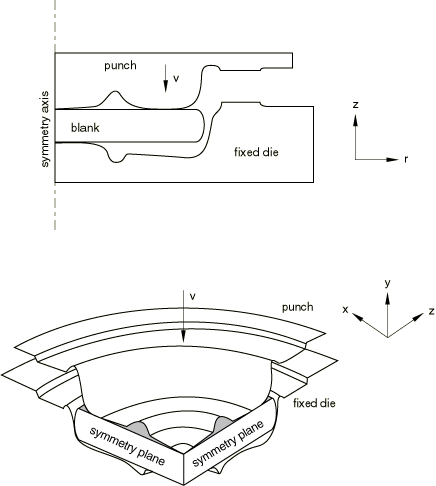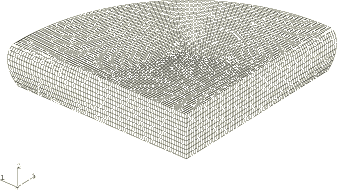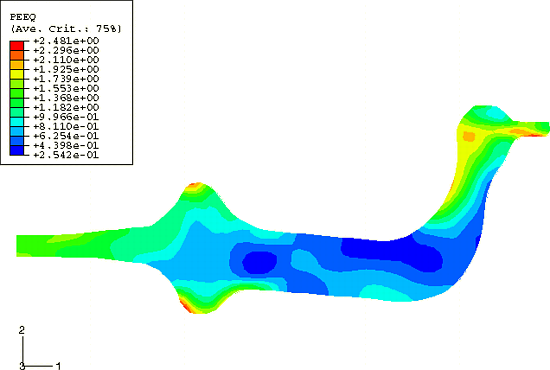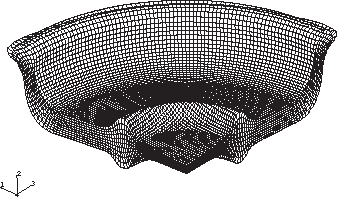Problem description
The benchmark problem is an axisymmetric forging, but in this example both axisymmetric and three-dimensional geometric models are considered. For the axisymmetric models the default hourglass formulation (HOURGLASS=RELAX STIFFNESS) and the enhanced strain hourglass formulation (HOURGLASS=ENHANCED) are considered. For the three-dimensional geometric models the pure stiffness hourglass formulation (HOURGLASS=STIFFNESS) and the enhanced strain hourglass formulation with the orthogonal kinematic formulation (KINEMATIC SPLIT=ORTHOGONAL) are considered. Each model is shown in Figure 1. Both models consist of two rigid dies and a deformable blank. The blank's maximum radial dimension is 895.2 mm, and its thickness is 211.4 mm. The outer edge of the blank is rounded to facilitate the flow of material through the dies. The blank is modeled as a von Mises elastic-plastic material with a Young's modulus of 200 GPa, an initial yield stress of 360 MPa, and a constant hardening slope of 30 MPa. The Poisson's ratio is 0.3; the density is 7340 kg/m3.
Both dies are fully constrained, with the exception of the top die, which is moved 183.4 mm downward at a constant velocity of 166.65 mm/s.
Case 1: Axisymmetric model
The blank is meshed with CAX4R elements. A fine discretization is required in the radial direction because of the geometric complexity of the dies and the large amount of material flow that occurs in that direction. Symmetry boundary conditions are prescribed at r=0. The dies are modeled as TYPE=SEGMENTS analytical rigid surfaces. The initial configuration is shown in Figure 2.
Case 2: Three-dimensional model
The blank is meshed with C3D8R elements. A 90° wedge of the blank is analyzed. The level of mesh refinement is the same as that used in the axisymmetric model. Symmetry boundary conditions are applied at the x=0 and z=0 planes. The dies are modeled as TYPE=REVOLUTION analytical rigid surfaces. The initial configuration of the blank only is shown in Figure 3. Although the tools are not shown in the figure, they are originally in contact with the blank.







